Services & Modalities

Cancer support
I attribute my remission from Non-Hodgkin’s Lymphoma, which my oncologists determined to be “terminal” twice, to the Comprehensive Medicine I received: chemo, radiation, plus a stem-cell transplant together with acupuncture and herbs.
read more about my story here: https://yinyangchannel.com/about/
I still use Chinese Medicine to treat chronic neuromuscular side effects as a result of radiation damage to the spinal cord and cerebellum. I know what it’s like to walk in the shoes of a cancer patient and I’m devoted to helping them navigate the challenging path of treatments and to devise a holistic treatment plan tailored to each person.

Neuro-muscular-skeletal pain and issues with motor skills
From cancer treatment, I suffered significant damage to the spinal cord which affects my balance, coordination, sensation, and gait. When the damage first appeared in 1999, I asked the neurological oncologist if I could speak with other people with the same condition. He said that everyone he knew was either deceased or in a wheelchair. I saw that there was little western medicine could do to address the damage done.
When I began to work with acupuncturist Libbie Rice and later, her mentor Jeffrey C. Yuen, the Dean of the Acupuncture program at the Swedish Institute, I could see that this school of Chinese Medicine (Classical Chinese Medicine) that they practiced, was different from others that I’d experienced. To my amazement, their treatments protocols were working to strengthen my balance and my gait.
With Yuen and Rice as my mentors, I enrolled in the Swedish Institute Acupuncture program in 2007. I knew that there’d be cancer patients whom I could help, but I’ve also been able to help those who suffer from neuro-muscular motor skills due to other factors such as inactivity, injury, and aging.

Movement and exercises
As a former dancer/choreographer, fitness trainer, and certified movement analyst, I pull from my knowledge of dance, Qi Gong and Tai Chi, plus a lot of physical therapy to devise movement protocols that are specific to each patient’s needs and will support their ability to move freely.

Brain Health and Longevity
Lisa Orlando is presently studying with Clayton Shiu, who received his PhD from Tianjin University of TCM – the largest hospital in China specializing in brain injury and stroke rehabilitation. He’s created a unique treatment system called “Nanopuncture” which merges Western Neuroscience and acupuncture. She is certified to treat Stroke and Neurological Rehabilitation, Speech Paralysis and is looking forward to his course on Gait in the fall of 2024. She’s listed on Dr. Shiu’s “Nanopuncture” website: https://nanopunctureseminars.com/find-a-practitioner
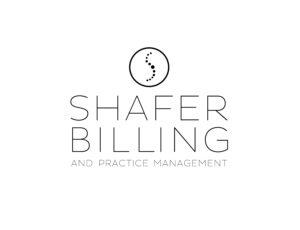 Many people have insurance coverage for acupuncture treatments and don’t know it. The good people at Shafer Billing and Practice Management can look into your coverage as well as your deductible before you start treatment, if you provide us with the correct information.
Many people have insurance coverage for acupuncture treatments and don’t know it. The good people at Shafer Billing and Practice Management can look into your coverage as well as your deductible before you start treatment, if you provide us with the correct information.
Please click “Download Form” below to download the Insurance Verification Form. You can complete the form either by filling it out on your computer or by printing it and filling it out by hand. After completing the form, please scan it and email it to yinyangchannel085@gmail.com.
Please remember to include scans or very good pictures of the front and back of your insurance card(s).
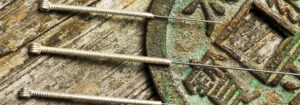
“Acupuncture is more relaxing than a massage, but no one believes me!”
-Dr. Helen Zhang, Chinese-born clinic supervisor at the Swedish Institute
It’s unfortunate that acupuncture tools are called “needles” because they’re really more like thin, flexible wires – nothing like the syringes MDs use.
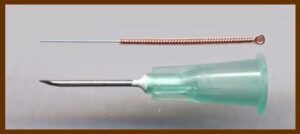
For patients new to acupuncture, I demonstrate on myself so they see that there’s nothing to be frightened of. Once they experience what acupuncture can do, which is just about everything – we forget that Eastern Medicine Is a complete medical system just like Western Medicine – they realize how unfounded their fear of needles was. Many people feel so relaxed they go into a deep sleep on the table.
Acupuncture shouldn’t be painful. A treatment involves a lot of teamwork between the practitioner and the patient. I do my best to find the right approach that puts the patients at ease for a pain-free, yet profound healing experience.
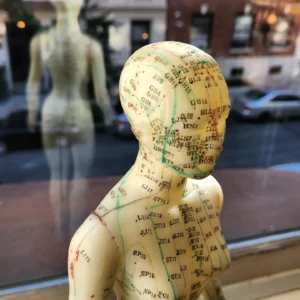
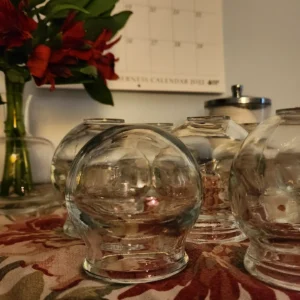
You may have seen cupping marks proudly displayed on the backs and shoulders of celebrities and athletes. For some, the marks can appear frightening because they don’t know how the therapy works. Not only do the marks fade, sometimes in a matter of days, most patients report that they benefit significantly from the therapy.
We don’t know where cupping therapy started; it’s a modality that was practiced in ancient Rome, Greece, Egypt, Arabia – not just in China. I’ve had patients from Mexico, Iran, and Asia who’ve come for cupping therapy alone because they grew up with it and like how they feel afterwards.
This teenager saw people at his gym sporting the cupping marks and wanted to try it for his shoulder pain. The treatment brought up a good amount of what’s called “Blood Stagnation.” But he told me he felt wonderfully relaxed upon getting off the treatment table. A few days later, the cupping marks were almost gone.
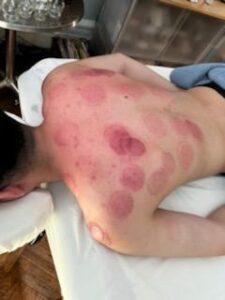
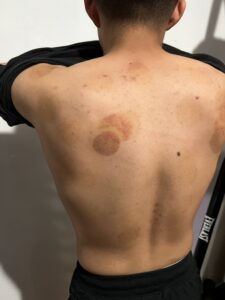
Given the pain that Blood Stagnation can cause, the understanding is that it’s better to have it released as opposed to lingering under the surface of the skin.
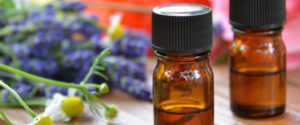
Some patients prefer to have essential oils applied to acupuncture points instead of needles because they aren’t sure how they feel about them or just don’t like them. Essential oils on points can be as effective as needles because they involve the olfactory function and work immediately by sending a message directly to the brain. They have proven to be very effective in returning the sense of smell due to Covid and other viruses.
Frankincense and Myrrh are just two of the more well-known oils which have proven their effectiveness since biblical times. Essential oils can change your mood, provide immediate relaxation, relieve pain, and clear your sinuses – among many other things.

Warm, herbal compresses are very effective at providing deep relaxation and flexibility to the sinews (muscles, tendons, ligaments) without the use of needles. Dancers and athletes have reported that the benefits are immediate and long lasting.
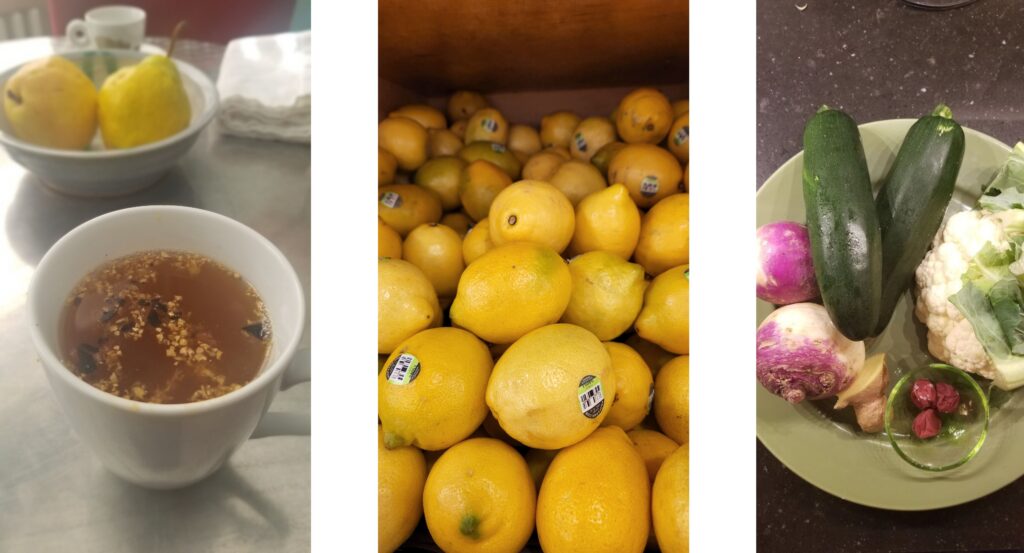
You can’t get to the acupuncturist every day, but you can cultivate good health and longevity and extend the benefit of your treatment every day through your diet. While both systems are vital, Western Nutrition is interested in the micronutrients of food whereas Chinese Dietary Therapy looks at the energetics and thermodynamics of foods inside the body.
For example: the zest of an organic lemon might be recommended in a tonic to support the immune system because the immune system of a lemon is very much like our own; it lies along its surface. Due to something called the “Law of Signatures” the body benefits from the lemon peel to help protect it from common pathogens such as viruses.
There is so much misleading information today about food that terms like “healthy” and “natural” are confusing. What’s good for one person isn’t necessarily good for another. Chinese Dietary Therapy teaches that there are no “bad foods,” however some foods may be more beneficial to one person with a certain condition while others may tax the body to process.
This modality is highly recommended for cancer patients or anyone who wishes to make changes to their body as a “garden of cultivation.”

Feng Shui is one of the eight modalities of Chinese Medicine and like the others, it has been in existence for thousands of years. It is considered as essential to health and well-being as Acupuncture, Herbs, and all the others. Feng Shui has been called “Acupuncture for your home.”
Classical Feng Shui Master Wyming Sun studied with the fourth ranking master of the Blue Dragon Lineage from Taiwan for three years. Because his father was Chinese and his mother was from Louisiana, he is uniquely able to explain the ancient eastern wisdom to a western client, whether he is consulting on a home or an institution, such as hospitals.
Wyming has helped me with the feng shui of both my home and my offices. His suggestion to move the desk in my home office to face the window worked wonders for communication. And the Rule of Six was Wyming’s fix for focus and indecisiveness. I am pleased to be able to recommend him to Yin Yang Acupuncture patients.

There’s a lot we can understand before even seeing a patient, simply by looking at their blood work.
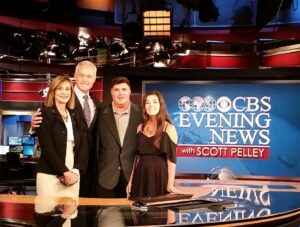
When I was working at 60 Minutes, I produced and edited a story in which correspondent Scott Pelley emphasized how important it is that a journalist have at least two sources before reporting something as fact. The blood test can provide that second source of information that confirms what the practitioner gathers from the Chinese Medical signs and symptoms. In this way, Eastern and Western medicine be employed together to help the practitioner devise a better treatment plan.
Often, a condition which may show up on a blood test – such as prediabetes – can be treated before it progresses into a full grown disease like Type 2 Diabetes.

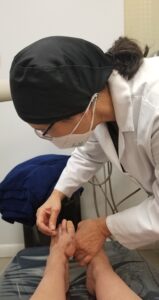
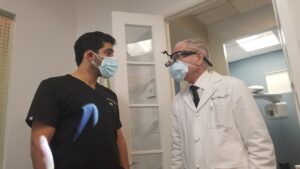
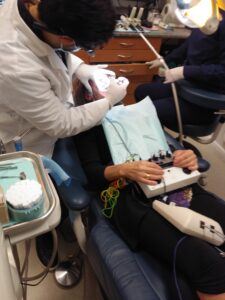
If you have sensitive teeth and want to lessen the amount of anesthesia used during a procedure – with your dentist’s blessing, I will treat you during your appointment.
In 2020, I began extensive dental work as a result of radiation therapy damage. I had difficulty with the side effects of the 14 shots of lidocaine (novocain) it took for the first implant.
While studying acupuncture in Beijing, I observed how it is used during surgery to reduce the amount of anesthesia and at times, to eliminate it altogether. I was curious how acupuncture could be used during dental surgery. One article I researched said that a patient who was allergic to anesthesia had a tooth extracted with no anesthesia except acupuncture needles. It sounded hard to believe but I was eager to try it.
I consulted with my amazing team of dentists at the NY Smile Institute, Dr. Peter Ferro and Dr. Armen Akopian and they were open to the idea.
For the trial run, I asked an acupuncture colleague to assist. To my delight, we were able to lessen the amount of anesthesia significantly, and when I had to raise my hand for lidocaine, I didn’t feel the injection.
Dr. Armen told me that needle phobia is the main reason people avoid the dentist. Now, I bring needles and an electric stim device with me each time I go to the dentist, even for teeth cleanings. Sometimes electric stimulation is required; sometimes it’s not. At times when the drilling has been relatively surface, I haven’t needed a single injection.
If you’re interested in acupuncture for dental anesthesia, it’s likely that whatever dental work you have done will hurt a lot less. And you will need fewer lidocaine injections.
